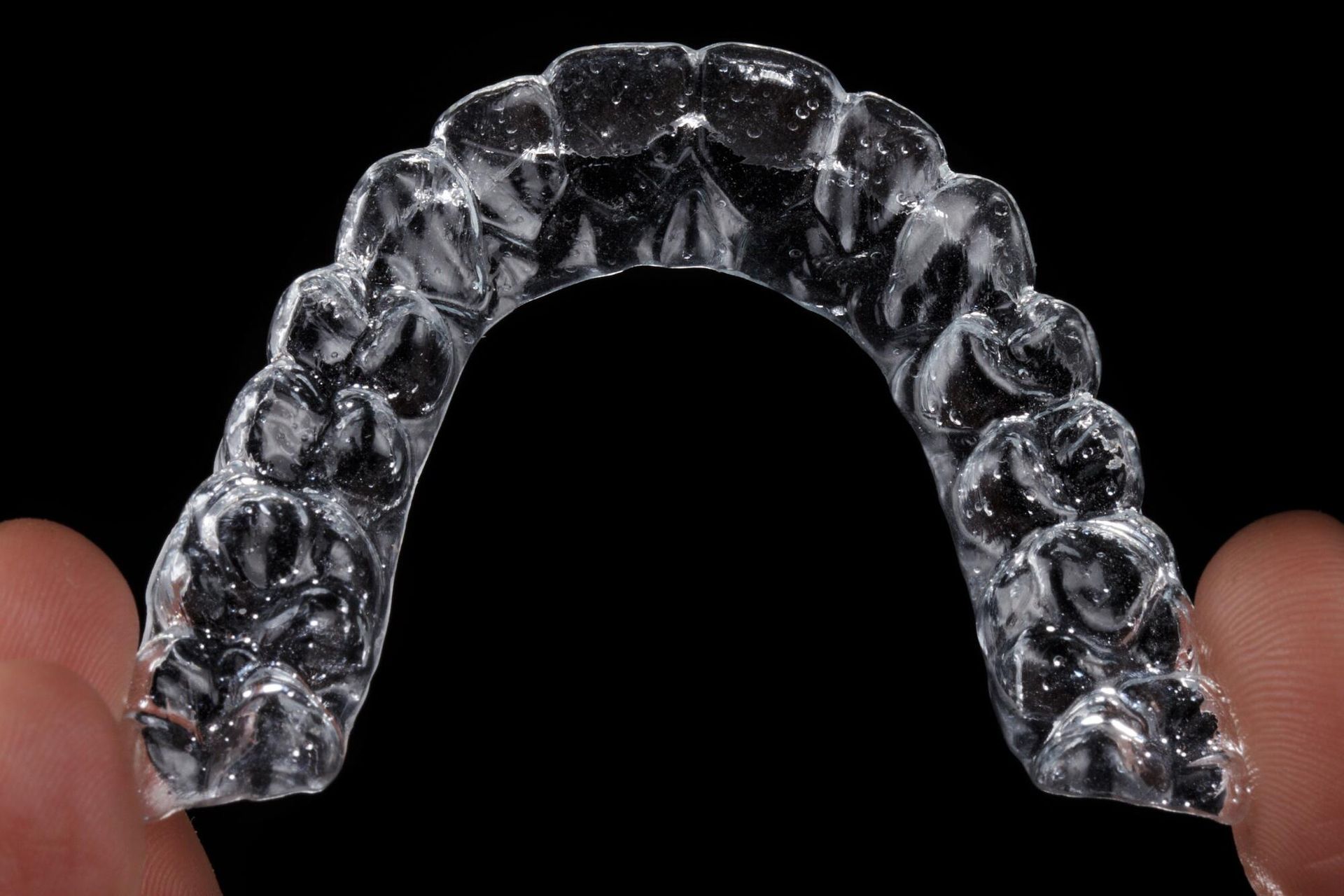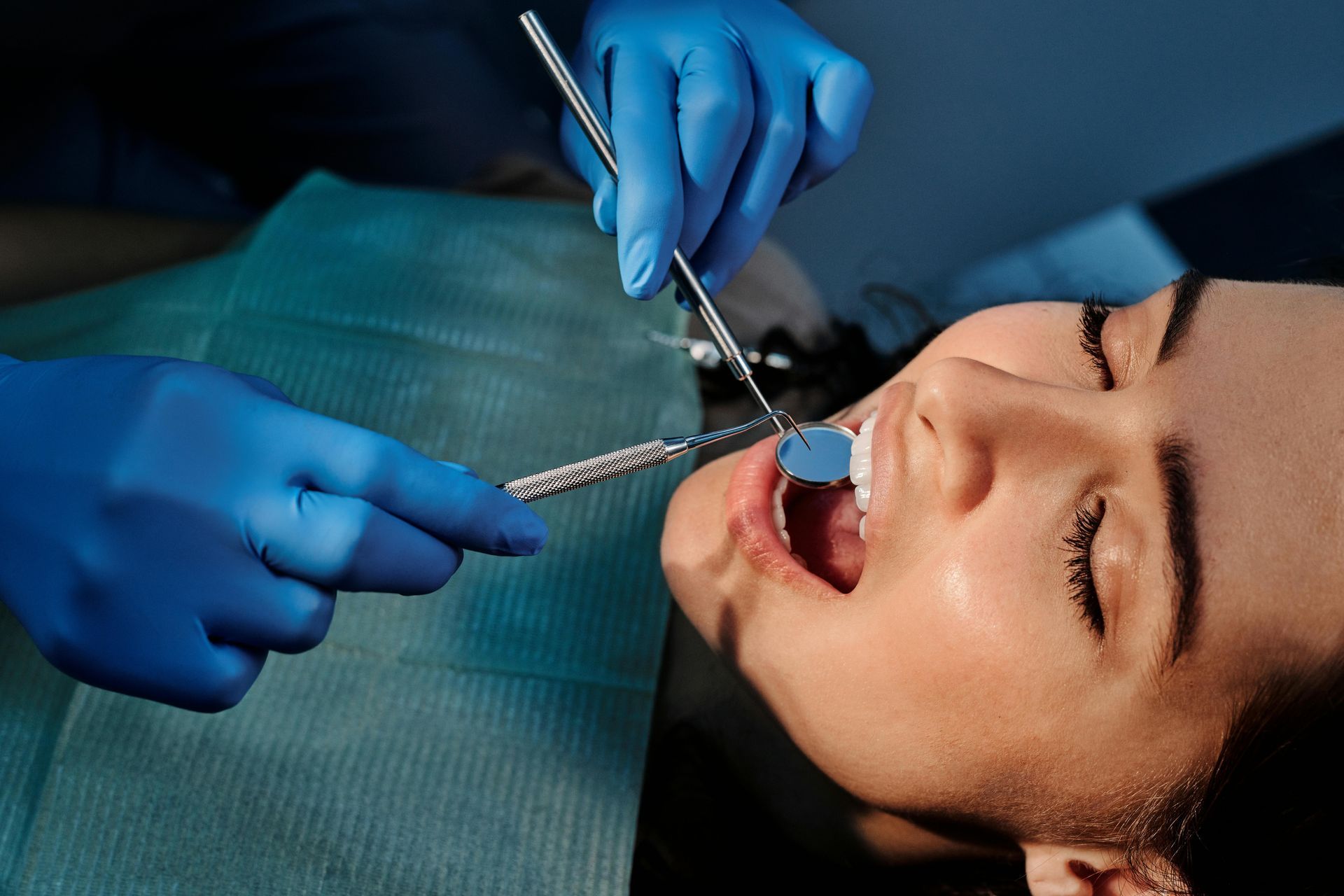Am I a Good Candidate for Invisalign? Understanding the Requirements and Expectations
Dr. Arif Virani
D.M.D
Dr. Arif Virani attained his Doctor of Dental Medicine degree from the University of Pennsylvania.
He performs an assortment of treatments in general dentistry for young children, adults and seniors. Dr. Virani’s passion in dentistry include services such as dental implants, gum grafting and wisdom teeth removal.
When he isn’t working, he enjoys working out, playing sports and keeping up with all the Toronto sports teams. He plays softball in the Bradford Sluggers league. As well, he enjoys dining at new restaurants and spending quality time with his family and friends.
Dr. Virani looks forward to providing you and your family with dental care in a warm and relaxing environment.
Are you unhappy with your smile and looking for a change? You are not alone. Clear aligners are revolutionizing the way people approach improving their teeth.
In April 2025, Align Technology, the company that manufactures the Invisalign treatment system, reported its 20 millionth Invisalign patient. This milestone highlights the growing demand for discreet and effective dental alignment solutions.
When it comes to the braces vs. Invisalign debate, Invisalign offers style and convenience. However, not everyone meets the precise aligner prerequisites.
It is essential to understand the Invisalign requirements first. Doing so helps determine if you are a good candidate for this orthodontic treatment.
Discover more on the key aspects of Invisalign eligibility in Bradford, Ontario, Canada, below.
Type of Dental Alignment Issues Treated
Data from the Dental Tribune International 2025 revealed that malocclusion (misalignment) affects around 60% to 75% of the global population.
Invisalign effectively treats a variety of dental alignment issues. It is most effective for mild to moderate problems.
The clear aligners gently move teeth into better positions over time. This gradual shift improves both function and appearance.
Typical cases for dental alignment include:
- Crooked teeth
- Gaps
- Overcrowding (where teeth overlap)
- Overbite correction
- Underbite adjustment
- Crossbite treatment
Invisalign's system uses customized trays. Each treatment is tailored to the individual's unique dental structure. Invisalign offers a discreet way to enhance smiles with precision and care.
Severe cases may require additional orthodontic treatments, such as braces. These complex issues often fall outside typical Invisalign requirements because they involve significant tooth rotation or jaw alignment that clear aligners cannot entirely correct.
Age and Invisalign Eligibility
Invisalign is designed for teens and adults with fully developed teeth. Most orthodontists recommend waiting until all permanent teeth have come in. Children under 12 typically do not meet Invisalign eligibility requirements because their jaws are still growing.
Teens love Invisalign for its discreet appearance and ease of wear. It also does not affect their appearance like traditional braces. Adults choose it to improve dental alignment without drawing attention to their teeth.
Age matters because treatment relies on stable tooth positions. Your dental provider will assess factors such as maturity and dental development to determine the best course of treatment.
Meeting Invisalign requirements early can lead to a smoother, more effective treatment process.
General Invisalign Requirements
Before starting Invisalign, your teeth and gums must be in good health. Good oral hygiene is a must. Dentists also check for sufficient bone support and overall tooth structure.
A clean, stable dental foundation is crucial for aligners to function correctly. These are basic Invisalign requirements.
Dental issues that may affect your Invisalign candidacy include:
- Smoking
- Teeth grinding
- Missing teeth
- Severe crowding
- Large gaps
- Cavities and gum disease
For issues such as missing teeth, it may be necessary to explore cosmetic options, including dental bridges or implants. Your provider will evaluate these factors to determine the best path.
Meeting these requirements ensures your treatment stays safe and reliable.
Braces vs. Invisalign: Key Differences
Invisalign and braces both straighten teeth, but they work in different ways. Braces use metal brackets and wires. Invisalign uses clear, removable aligners.
The braces are fixed, so you cannot take them off. One of the main benefits of Invisalign over braces is that the trays come out for eating and brushing.
The use of braces may be required to treat more complex cases. Invisalign is better for mild to moderate alignment issues. Braces are noticeable, while Invisalign is nearly invisible.
When wearing braces, patients must carefully clean around wires. Invisalign makes dental hygiene easier with the option of tray removal.
Your dental provider will compare your case to determine which option fits your needs and Invisalign requirements best.
Clear Aligner Discipline
Invisalign is not a shortcut and requires responsibility. Clear aligners only work if you wear them as recommended. Discipline means wearing them even when it is inconvenient.
You will need to commit to wearing aligners consistently, at least 20 to 22 hours per day (The C.L.E.A.R. Institute). Aligners must be worn at all times, including during sleep, at work, and even at social events. They are also frequently replaced every week.
Taking them out too often reduces their effectiveness. Skipping hours or days at a time can drastically delay or alter your results. You will need to track your schedule and follow your provider's timeline.
Regular wear helps your teeth shift as planned. If you are forgetful or inconsistent, Invisalign may not be the right choice for your orthodontic treatment.
Maintenance and Care of Invisalign Aligners
Proper maintenance and care of Invisalign aligners are essential for a successful treatment outcome. Clean your aligners daily with a soft toothbrush. Use a clear, gentle soap to remove bacteria and prevent odors.
Avoid using hot water, as it can cause the plastic to warp and affect the fit. Always store your aligners in their case when not in use to protect them from damage or loss.
Keeping aligners clear and intact ensures they work correctly and look discreet. Follow your dental provider's care instructions closely to maintain optimal oral hygiene and ensure your treatment progresses smoothly for the best results.
Is Invisalign Cosmetic or Orthodontic?
There is some debate over whether Invisalign is strictly a cosmetic dentistry procedure or an orthodontic treatment.
Invisalign enhances the appearance of your smile cosmetically by straightening your teeth. That is why many providers include it as part of their cosmetic dental options.
However, the primary purpose of Invisalign is as an orthodontic treatment. It corrects bite issues and improves dental alignment. You get a healthier bite and a better-looking smile at the same time.
Choosing Invisalign bridges the gap between cosmetic goals and clinical correction. Using Invisalign delivers both function and aesthetics. It is an ideal option for those seeking subtle treatment with real results.
Treatment Duration and Expectations
The actual length of Invisalign treatment varies from patient to patient. It often depends on a case-by-case basis and varies according to an individual's needs and level of severity.
Most people finish in 12 to 18 months, while others may see results in just six months. More complex alignment issues may require additional time to resolve.
Invisalign clear braces are designed to fit seamlessly into your daily life, but they require commitment and accountability. Staying on schedule depends on wearing aligners as directed without skipping days.
Your dentist will outline your personalized plan for you. Following it closely ensures the best outcome and keeps your orthodontic treatment on track.
Engage in Ongoing Dental Checkups
Regular dental checkups are essential during Invisalign treatment. These visits help monitor your progress and spot issues early.
Your dentist or orthodontic specialist may adjust your plan based on how your teeth respond to treatment. Missed appointments can slow your results or lead to complications.
Routine exams also keep your gums and teeth healthy. Cleanings help prevent plaque buildup around aligners.
Checkups ensure you are meeting Invisalign requirements and staying on track. They also give you a chance to ask questions and get professional guidance.
Think of these visits as checkpoints in your dental alignment journey. Engaging in consistent care leads to a more successful outcome and healthy, straight teeth.
Financial Considerations
Invisalign is an investment in your oral health and confidence. Costs in Canada vary depending on your treatment needs.
After a consultation, your provider will give a personalized estimate. Many clinics offer monthly payment plans to help spread out costs. Some private dental insurance policies include coverage for orthodontics.
The Canadian Dental Care Plan (CDCP) may help cover basic dental care. It can provide coverage for orthodontic services only when deemed medically necessary and not purely cosmetic in nature.
Be sure to check your eligibility and coverage details. Exploring all options can make a straighter, healthier smile more achievable across Canada.
Creating Your Customized Invisalign Treatment Plan
If you meet the Invisalign requirements, you can begin with your orthodontic treatment. Your Invisalign journey starts with a detailed consultation tailored to your smile goals.
Your dentist will examine your teeth and assess your dental alignment. They will also take digital scans. This data helps create a 3D model of your smile.
From there, a customized Invisalign treatment plan is built just for you. It outlines how each aligner will shift your teeth over time.
You will see a preview of your expected results before starting. This personalized approach ensures precise movement and predictable outcomes.
Having a tailored plan ensures your orthodontic treatment is efficient and successful.
Importance of Patient-Provider Communication
Clear communication with your dentist in Bradford, Ontario, Canada, is key during Invisalign treatment. Regular check-ins ensure your teeth are shifting as expected.
If something feels off, such as pain or trays not fitting, speak up right away. Your provider can adjust your plan or offer solutions. Asking questions helps you understand each step and stay motivated.
Maintaining an open dialogue also supports accountability. It is especially crucial when it comes to wearing aligners correctly.
Your progress depends on teamwork between you and your provider. Do not skip appointments or stay silent about concerns.
Staying connected keeps your orthodontic treatment on track. As a result, it ensures better and more predictable results.
Get Your Smile Back at Dentistry on 88 in Bradford, Ontario, Canada Today
Invisalign aligners offer a convenient path to straighter teeth. Meeting the key elements of these Invisalign requirements and expectations keeps your treatment on track. With proper care and guidance, you can achieve lasting results and a confident smile.
Dentistry on 88 offers comprehensive and tailored dental care in Bradford, Ontario. Dr. Arif Virani, DMD, specializes in gum grafting, dental implants, and wisdom teeth removal for seniors, children, and adults. Our office now accepts the Canadian Dental Care Plan (CDCP) Insurance plan.
Take advantage of our New and Existing Patient Special with a comprehensive exam and x-rays for just $199 today.













